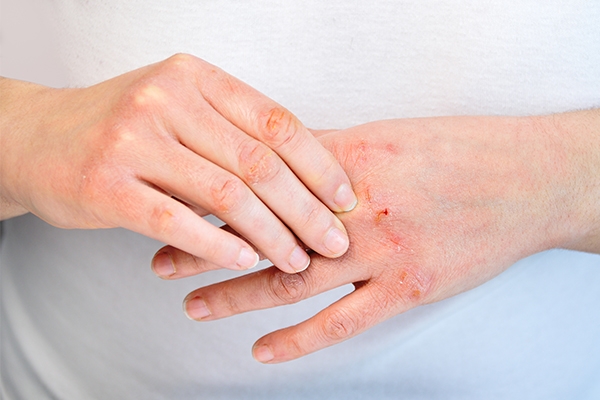Here is How Illicit Drugs Ruin Your Skin

Sheila Marcia once made the public shake their heads with a series of controversies. One of them is drug abuse. Illicit drugs made this young actor's beautiful face look haggard and old. Sheila appeared to be reborn once she was free of the drug trap. With a beaming face, she admits that her life is much happier now.
Narcotics are natural, synthetic, or semi-synthetic substances that have depressant, hallucinatory, or arousal effects. Abuse typically leads to substance use disorders. A medical condition characterized by compulsive substance use, also known as addiction. When substance abuse interferes with daily life, this disorder develops.
Addiction is distinct from dependence. Addiction is a condition in which the body requires the assistance of certain substances in order to function. Addiction is the first stage of dependence. But keep in mind that addiction does not always start with addiction.
The Law on Narcotics divides narcotics into three categories based on the risk of addiction. Group I includes marijuana, opium, and cocaine. Morphine and alphaprodine are in Group II. Group III has a lower risk of dependence than the other two groups.
Drug effects on the skin

Drug abuse has a physical and psychological impact on the user. The skin is the most visible organ that is affected by drug side effects. This is the explanation.
1. Lifestyle
In general, drug addicts lead an unhealthy lifestyle. One of them is sleep deprivation. This is demonstrated by various substances' ability to "force" the body to stay awake. From instant to days. This practice stifles skin regeneration. Long-term drug addiction also slows wound healing.
2. Personal hygiene
Drug addicts are typically preoccupied with what they require, i.e. the drug itself. They frequently neglect personal hygiene, such as bathing. This habit makes the skin vulnerable to infection.
Drug use causes the body to become hot and sweaty. Sweat is made up of water and bodily waste. If not thoroughly rinsed, this substance can be reabsorbed and irritate the skin.
3. Nutritional deficiencies
Drug addicts frequently neglect their nutrition. They even refuse to eat. They are again concerned about drugs. Nevertheless, in order to function properly, the skin requires nutrients such as water, minerals, and vitamins.
How prohibited substances damage skin

The substances absorbed by the body have a significant impact on the skin's condition. Here's how drugs affect the skin:
Crack hands
Cocaine addicts typically develop necrosis and blackening of their palms or crack hands. Cocaine use gradually causes the loss of eyelashes and brows.
Cocaine is a stimulant that suppresses appetite, affecting nutrition. Cocaine causes blood vessels to constrict (vasoconstriction).
Restricting blood flow to specific parts of the body, such as the skin. The skin's ability to heal itself is hampered by a lack of blood and oxygen.
Cocaine's effect on the skin is determined by how it is used. Cocaine can be smoked, snorted, or injected into a vein. After using it, users expect to feel energized and euphoric.
However, sources claim that combining cocaine with other substances can result in skin lesions and even decay. Long-term cocaine addiction can cause heart attacks, respiratory failure, strokes, seizures, and death, in addition to skin damage.
Chronic rash and itching
Opium or heroin use causes a skin condition with a measles-like rash (morbilliform rash) and chronic itching in the genital area. Other effects may occur depending on how the substance is used.
Heroin is derived from the seeds of the poppy flower (Papaver somniferum) or opium. Its use causes euphoria, drowsiness, and confusion.
This substance is beneficial as a sedative, pain reliever, and even as an anesthetic. However, excessive use leads to addiction.
Heroin addicts are at risk of contracting deadly bacterial infections, such as flesh-eating bacteria. Changes in skin color to reddish purple are also common and are known as “livedo reticularis”.
These changes are the result of accelerated cell aging. Bacterial abscesses and necrosis are also possible. Especially when heroin is injected into a vein.
Regular heroin use will increase tolerance. As a result, don't be surprised if the number of drugs consumed by addicts rises. A sudden stop will result in a painful kickback.
Early aging
Smoking crystal meth causes premature aging of the face, as evidenced by wrinkles. Crystal meth addicts typically have pale or grayish skin that is dry and rough, and they sweat a lot. Addicts are more prone to breakouts and infections because methamphetamine lowers the immune system.
Methamphetamine and amphetamine, commonly referred to as meth, can be ingested, inhaled, or heated and smoked. The end result is increased long-term awareness and motivation for physical activity.
According to studies, methamphetamine in the blood causes abnormalities in fat cell metabolism. This abnormality causes the formation of pro-inflammatory molecules known as ceramides, which, in excess, hasten cell aging and death.
Meth sores
Drug addicts frequently suffer from formication syndrome and delusional parasitosis. Formication syndrome is characterized by an itchy or tingling sensation, as if an insect is crawling beneath the skin.
Parasitosis delusion is a mental illness in which the sufferer believes his body is infested with parasites (mites or fleas), insects, and so on.
These two conditions cause methamphetamine addicts to scratch their skin. The higher the dose, the more severe the psychological condition, until the skin develops blisters, or "meth sores."
Other long-term consequences of methamphetamine use include mood disorders, the emergence of violent behavior, anxiety, confusion, insomnia, and severe dental problems.
Skin is a vital part of the body. Wash your skin with clean water every day to keep it healthy. Wear sunscreen to keep it safe from the sun.
Drink plenty of water to keep it hydrated. Above all, avoid drug abuse.
If you have any questions about your skin's health, visit GWS Medika Clinic at Jakarta.



